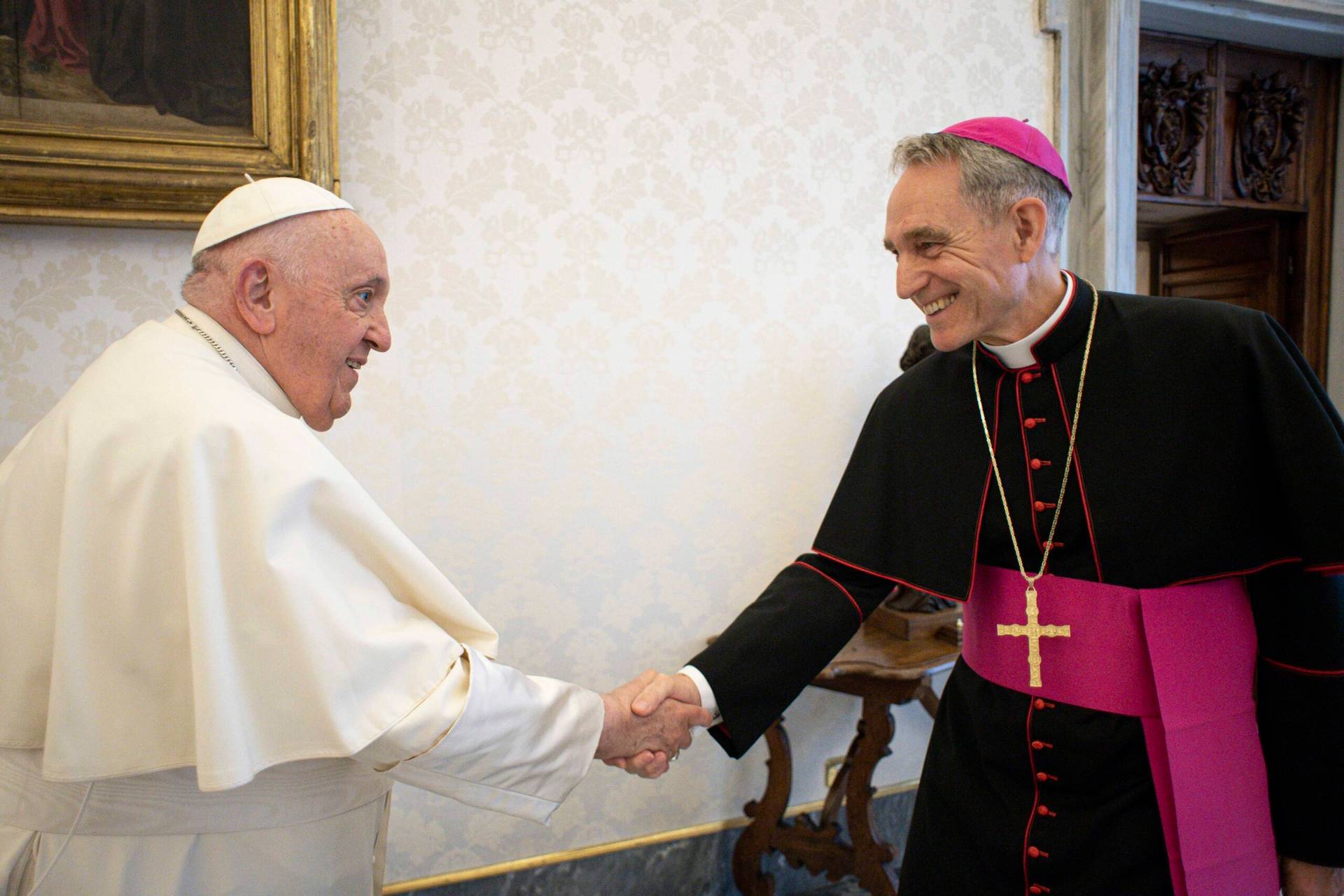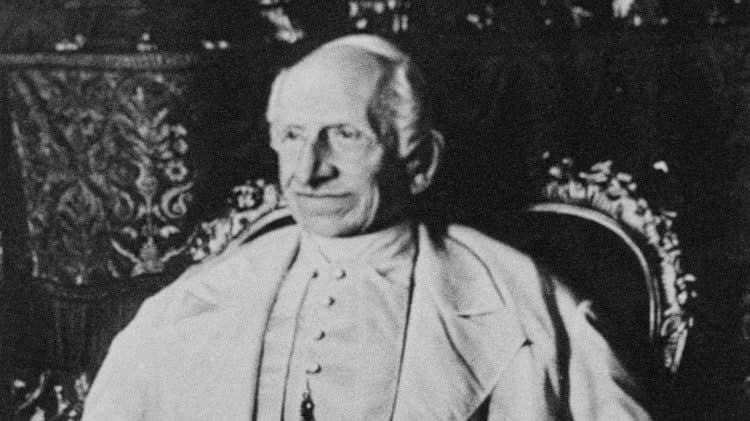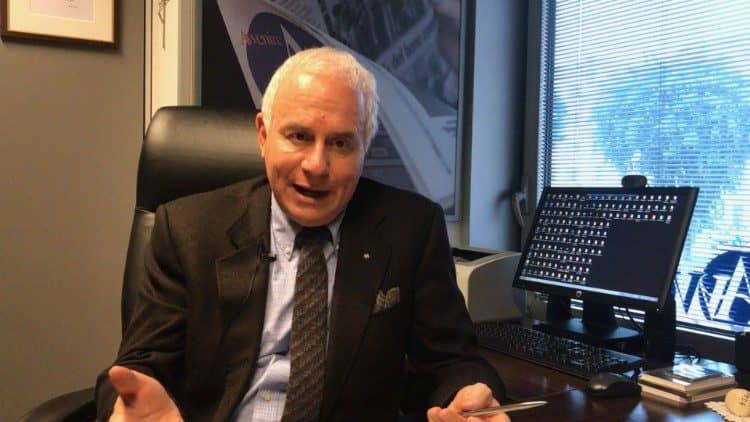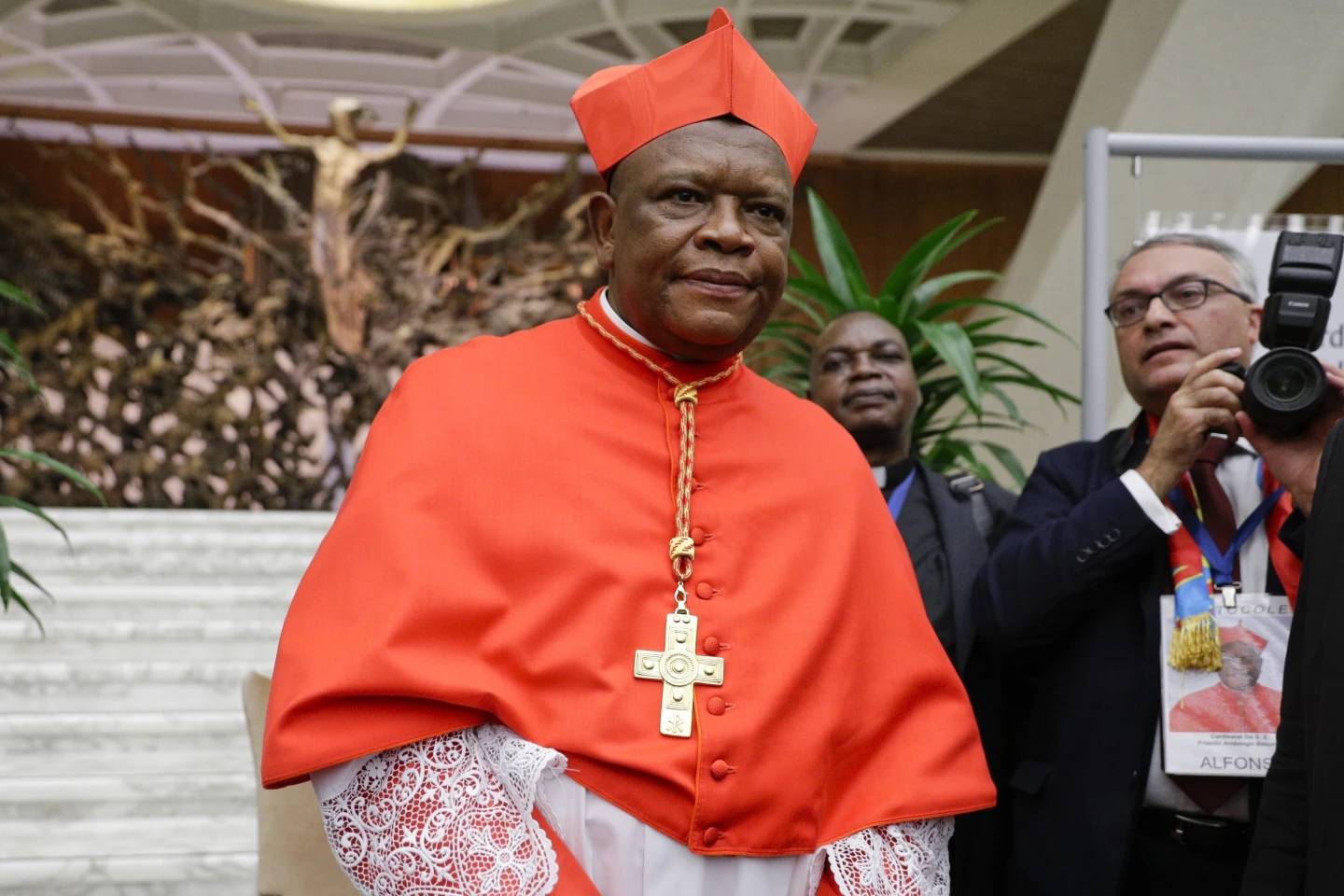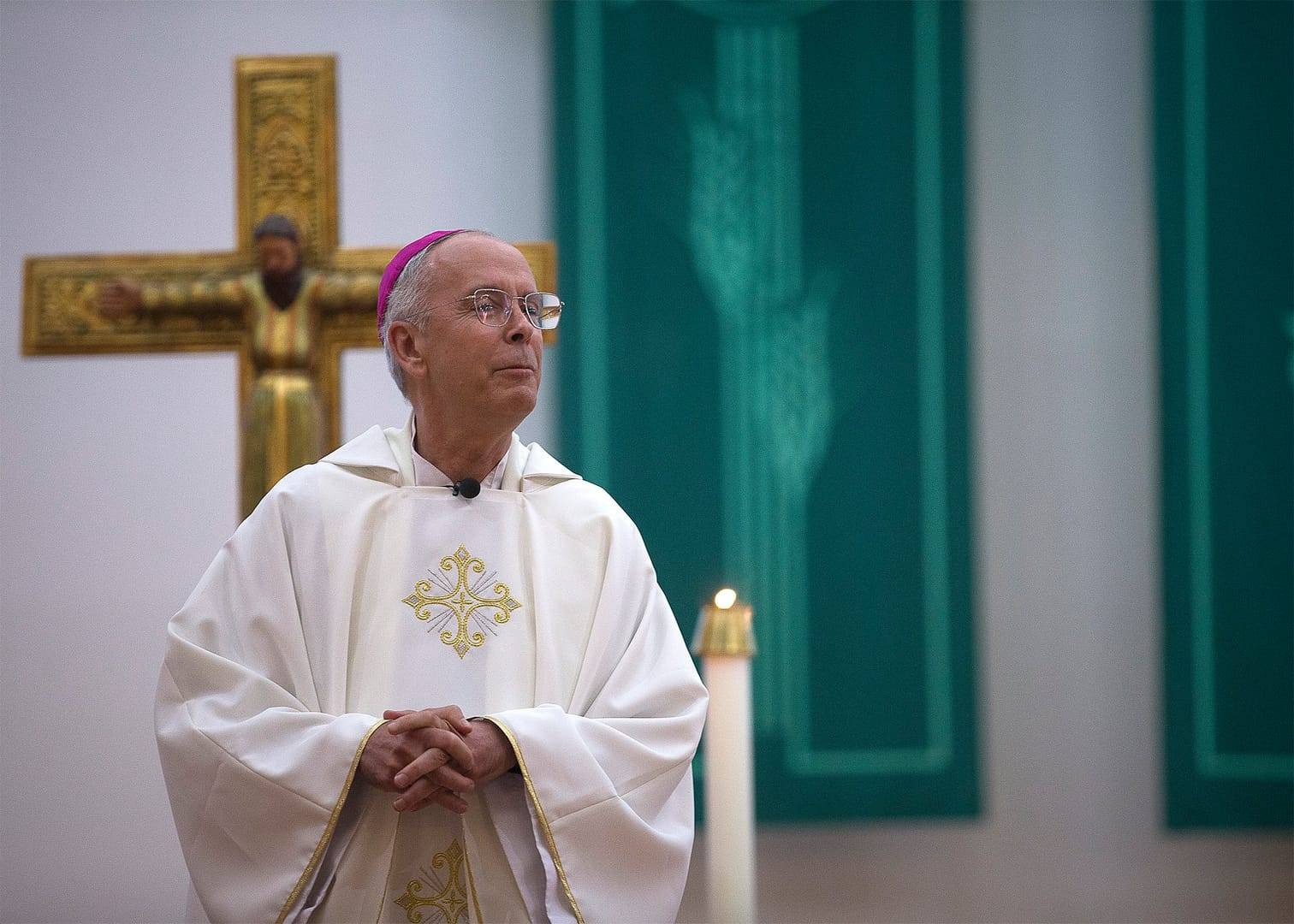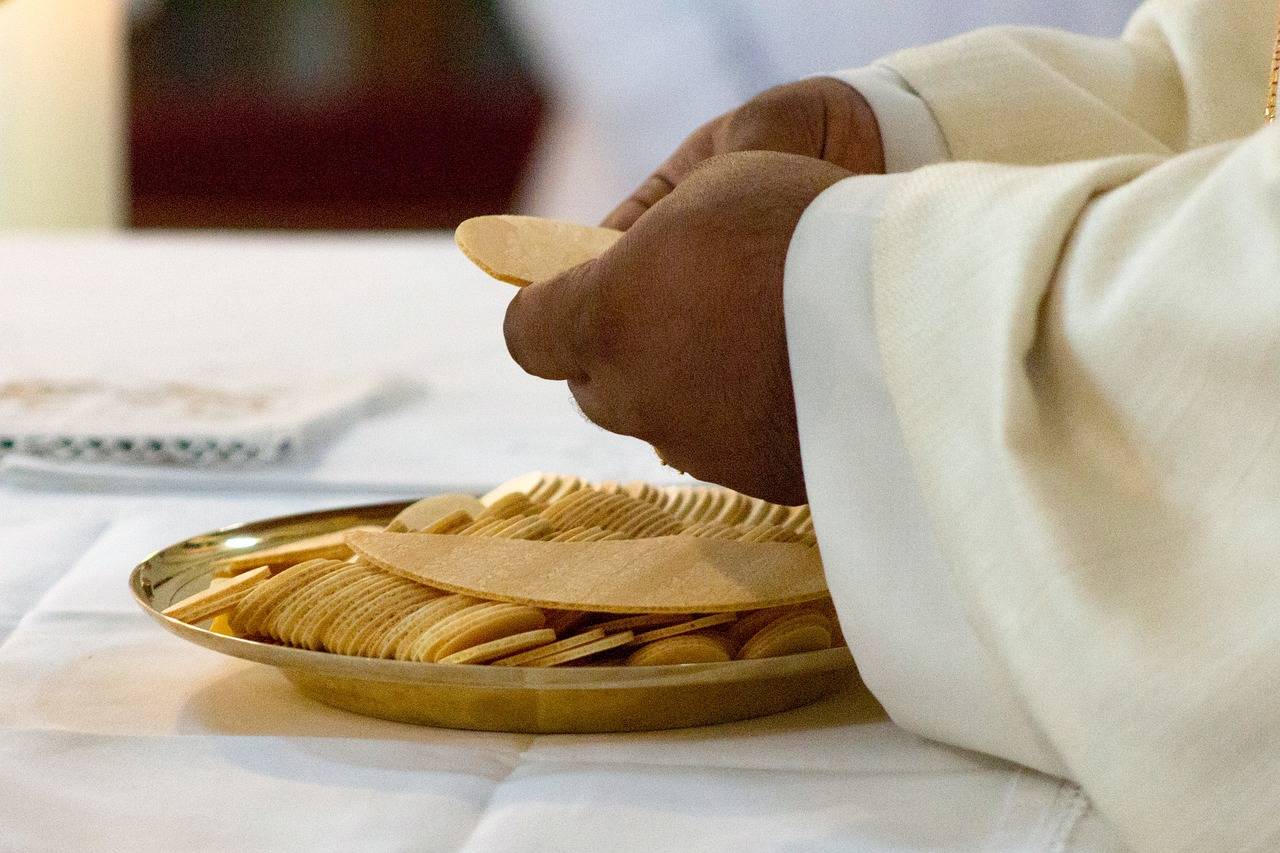ROME – In “The Simpsons,” the annual Halloween episodes are known for their spoofs of the supernatural. Back in 1993, one of my favorites featured a vision of Hell, where the legendarily donut-loving Homer has been assigned to the “Ironic Punishment Division.” He’s tethered to a chair as a machine force-feeds him pastry after pastry.
(Homer appears delighted, mumbling “more please!” after each mouthful, leading a frustrated demon to say: “I don’t understand it … James Coco went mad in 15 minutes!”)
I thought of that episode this week, speaking to a visiting clergyman who was astonished to discover that German Bishop Franz-Peter Tebartz-van-Elst – better known to the world as the “Bling Bishop,” whose exuberant spending in the Diocese of Limburg in 2013 caused such a furor that he was granted a “sabbatical” by the newly-elected Pope Francis – is actually now a Vatican official.
My cleric friend recently attended a meeting in the Pontifical Council for the New Evangelization, where Tebartz-van-Elst led the discussion. He said he spent a few minutes trying to figure out where he’d heard the name before, until realization dawned: “My God, he’s the bishop of bling!”
Welcome to the “Ironic Employment Division” in Pope Francis’s Vatican.
In case memories have dimmed, Francis was compelled to remove Tebartz-van-Elst in October 2013 due to public backlash against his spending an estimated $42 million on remodeling his diocesan center and residence, including $1.1 million for garden landscaping and even $22,000 for a bathtub.
Originally, the Vatican said the Bling Bishop was being granted a temporary sabbatical outside the diocese. That “temporary” measure became permanent in March 2014, at a time when the Vatican was trying to negotiate an agreement under which Tebartz-van Elst would not be sued by the Limburg diocese in an effort to recoup its losses over the construction projects.
The question then became what to do with him since Tebartz-van-Elst was only 54 at the time of his exile, a full two decades short of the usual retirement age for Catholic bishops of 75.
In the end, Tebartz-van-Elst was brought to Rome and given a new gig as a “delegate for catechesis” in the Council for New Evangelization. Although his appointment is a matter of public record – it’s even on his Wikipedia page – the Vatican understandably made no effort to broadcast it, leaving even seasoned clergy a bit surprised to see him today taking charge of Roman meetings.
Given that the main complaint against Tebartz-van-Elst in Limburg was that his regal spending habits were “unevangelical,” at odds with the witness of Jesus in the Gospels (not to mention Francis in the papacy) and thereby driving people away from the faith, many observers would likely find his present assignment as a top Vatican official for evangelization not just a little bit jarring.
In reality, however, no one probably should be surprised. There’s a long tradition of clerics in disgrace in their homelands ending up in Rome, but in the Francis era they sometimes wind up in jobs that almost seem a private papal satire.
Most famously, there’s the case of Bishop Gustavo Zanchetta of Argentina, who resigned his post heading the Diocese of Oran in August 2017 amid accusations of abuse of power and “strange behavior” (charges of sexual abuse of adult seminarians came later). The rap sheet against Zanchetta also features charges of financial misconduct, including selling a building belonging to the diocese for $800,000 without going through the proper channels and leaving the transaction off the diocesan books.
Despite that, Francis in 2017 not only brought Zanchetta to Rome but named him Assessor to the Administration of the Patrimony of the Apostolic See (APSA), the Vatican’s financial powerhouse which oversees both the Holy See’s investment portfolio and its real estate holdings in Italy and around the world.
Once again, it’s hard to imagine a Vatican gig (other, perhaps, than with the Pontifical Commission for the Protection of Minors) that would seem more ironic given the baggage Zanchetta carried.
Another fitting for-instance is Monsignor Dario Edoardo Viganò, who was forced to resign as the Vatican’s communications czar in March 2018 after attempting to pass off a doctored letter by Pope emeritus Benedict XVI as the real thing and getting caught. For presiding over such a PR fiasco, Francis moved Viganò to a different post — not as prefect of the Dicastery for Communications but its “assessor,” meaning to this day he’s still in a position to shape the communications operation.
Further back in time, there’s Monsignor Mario Salvatore Battista Ricca, who was confirmed by Francis as prelate of the Vatican Bank in 2013 despite revelations in the Italian media that during his previous service as a papal diplomat in Uruguay, he’d been involved in a couple of scandalous situations involving homosexual activity – one in which Battista Ricca was apparently beaten up after leaving a gay bar, and another in which he was trapped in an elevator at the papal embassy in Montevideo with a young man and had to be rescued by the fire department.
Despite that, Francis confirmed Battista Ricca in a sensitive post at an institution which, at the time, was also trying to shake off a well-earned reputation for scandal.
Of course, Francis presumably knows more about these situations than any of the rest of us, and he may well have perfectly valid reasons for appointing or confirming such officials to the posts they currently hold.
However, it’s hard not to wish there was a “Simpsons” for the Vatican – because, let’s face it, the Bling Bishop in charge of evangelization probably would be the basis for one hell of a Halloween episode.







